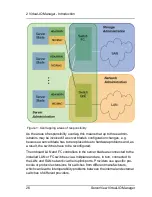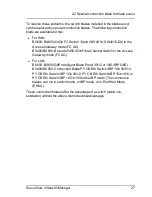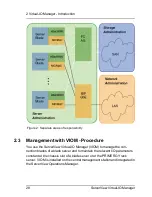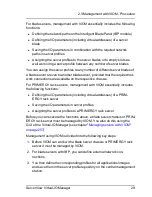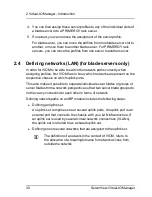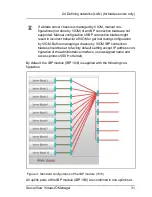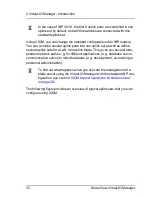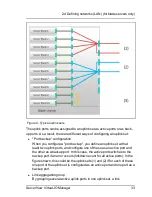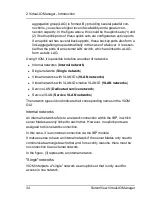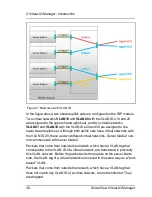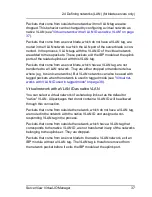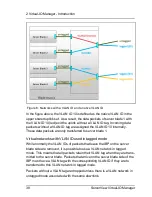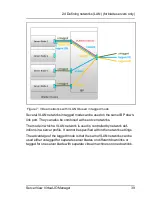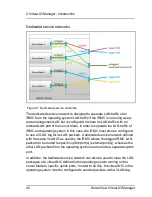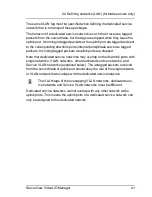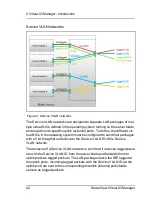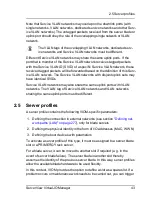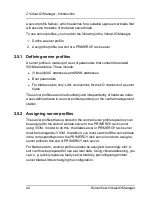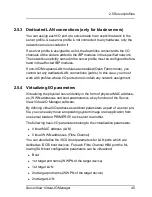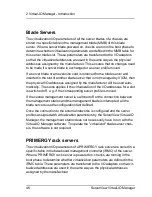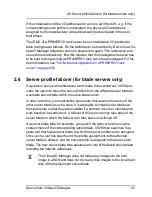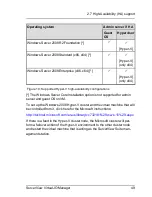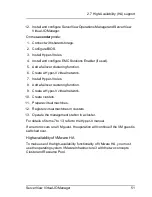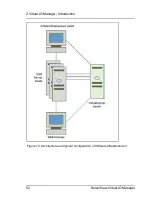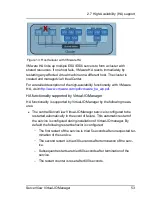
2 Virtual-IO Manager - Introduction
Figure 6: Networks with a VLAN ID and a native VLAN ID
In the figure above, the VLAN ID 10 is defined as the native VLAN ID in the
upper shared uplink set. As a result, the data packets of server blade 1 with
the VLAN ID 10 (red) exit the uplink without a VLAN ID tag. Incoming data
packets without a VLAN ID tag are assigned the VLAN ID 10 internally.
These data packets are only transferred to server blade 1.
Virtual networks with VLAN ID used in tagged mode
While normally the VLAN IDs of packets that leave the IBP on the server
blade side are removed, it is possible to use a VLAN network in tagged
mode. This means that all packets retain their VLAN tag when they are trans-
mitted to the server blade. Packets that arrive on the server blade side of the
IBP must have a VLAN tag with the corresponding VLAN ID if they are to
transferred to this VLAN network in tagged mode.
Packets without a VLAN tag are dropped unless there is a VLAN network in
untagged mode associated with the same downlink.
38
ServerView Virtual-IO Manager
Summary of Contents for ServerView Virtual-IO Manager V3.1
Page 10: ...10 ServerView Virtual IO Manager ...
Page 56: ...56 ServerView Virtual IO Manager ...
Page 276: ...276 ServerView Virtual IO Manager ...
Page 300: ...300 ServerView Virtual IO Manager ...
Page 302: ...302 ServerView Virtual IO Manager ...
Page 312: ...312 ServerView Virtual IO Manager ...
Page 330: ...330 ServerView Virtual IO Manager ...
Page 352: ...352 ServerView Virtual IO Manager ...
Page 362: ...362 ServerView Virtual IO Manager ...



